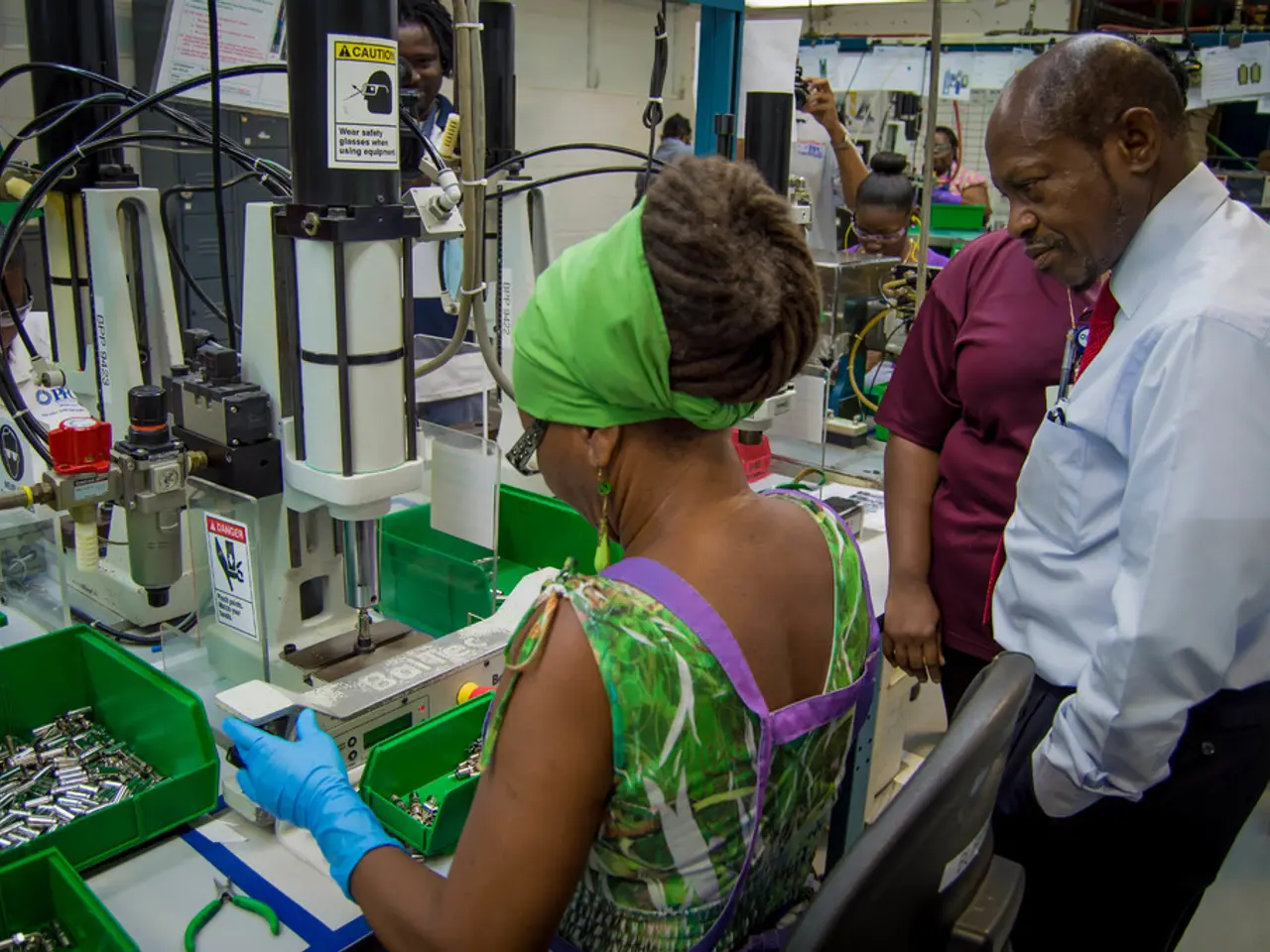Streamlining Production Without Paper: A Handbook for Paperless Manufacturing
The fashion industry is embracing a new era of efficiency, sustainability, and cost savings with the implementation of paperless manufacturing. This shift towards digital technologies aims to optimize and automate manufacturing processes, reducing reliance on paper.
Operational Efficiency
Digital workflows enable real-time updates and streamlined processes, cutting down manual data entry errors and enabling faster execution of tasks such as inventory management, pricing, and promotions. Automated stock workflows and synchronized real-time inventory visibility reduce delays and human error.
Cost Savings
Eliminating paper reduces costs associated with printing, signage, and physical documentation logistics. Labor costs decline as tasks become more automated, allowing staff to focus on higher-value roles instead of manual paperwork.
Sustainability
Going paperless significantly lowers waste output and energy consumption related to paper production and disposal. It contributes to meeting ESG (Environmental, Social, and Governance) standards and appeals to eco-conscious consumers. Digital systems also enable better tracking of sustainable materials and certifications in product design, reducing environmental impact from the first stages of manufacturing.
Improved Accuracy and Traceability
Digital Product Lifecycle Management (PLM) systems provide a centralized source of truth for materials, designs, and compliance data, improving traceability of fabrics and components while ensuring regulatory compliance without manual tracking. RFID and barcode integration further enhances inventory accuracy and enables automated, real-time tracking across the supply chain, reducing overproduction and returns.
Faster and Greener Prototyping
Digital 3D prototyping replaces the need for multiple physical samples, saving time, resources, and minimizing waste in the design phase.
A successful transition to paperless manufacturing requires careful planning, buy-in and proficiency from employees, and robust cybersecurity measures. Develop a detailed plan outlining the steps to transition to paperless operations, including timelines, resource allocation, data migration strategies, and training schedules. Conduct a thorough cost-benefit analysis to understand the long-term savings and efficiencies that paperless manufacturing can offer before making the initial investment.
Invest in robust cybersecurity measures, including secure cloud storage, encryption, and access controls, to address data security concerns when moving to a paperless system. Develop a comprehensive training program that covers how to use new digital tools and adjust to paperless processes. Assemble a team that includes representatives from IT, operations, finance, HR, and other relevant departments.
Embracing paperless processes positions manufacturers to readily adopt emerging technologies, keeping them at the forefront of innovation. By transforming workflows into more precise, cost-effective, and environmentally friendly operations, paperless manufacturing aligns business goals with growing sustainability expectations.
[1] "The Sustainable Fashion Revolution: How Technology is Transforming the Industry." Forbes, 2021. [2] "The Impact of Paperless Manufacturing on Efficiency and Cost Savings." Manufacturing Global, 2020. [3] "Sustainable Fashion: The Role of Digital Technologies." McKinsey & Company, 2021. [4] "The Future of Fashion: A Look at Paperless Manufacturing." Textile Focus, 2021. [5] "Paperless Manufacturing: A Comprehensive Guide." Industry Today, 2021.
- As part of the shift towards digital technologies, the environmental-science of smart-home-devices is exploring ways to optimize energy consumption in homes, aiming for a more sustainable lifestyle.
- In the realm of education-and-self-development, online-education platforms are promoting learning about climate-change, encouraging individuals to make informed decisions about their small-businesses and home-and-garden practices that can contribute to the battle against global warming.
- Finance analysts are consulting manufacturers about the return on investment in adopting paperless manufacturing, considering factors such as operational efficiency, cost savings, and sustainability, to help businesses make informed decisions.
- The manufacturing industry is collaborating with industry peers and gadgets companies to incorporate technology into their operations, such as IoT devices and AI, to automate and streamline their processes further.
- Universities are offering courses in manufacturing and technology to equip students with the knowledge needed to drive innovations in the sector, emphasizing the importance of environmental-science and sustainability in their curriculum.
- Although there are challenges in implementing paperless manufacturing, such as infrastructure changes and resistance from employees, many small-businesses view it as an opportunity to stay competitive in the marketplace and appeal to eco-conscious consumers.
- By adopting paperless manufacturing, businesses can not only improve their financial performance and operational efficiency but also contribute positively to the environment, positioning themselves as leaders in environmental-science and sustainability.
- The fashion industry is not the only sector embracing digital transformation; the science, finance, and education-and-self-development realms, among others, are also adopting paperless systems and Smart Gadgets, signifying a wider trend towards efficiency, cost savings, and sustainability across various industries.




